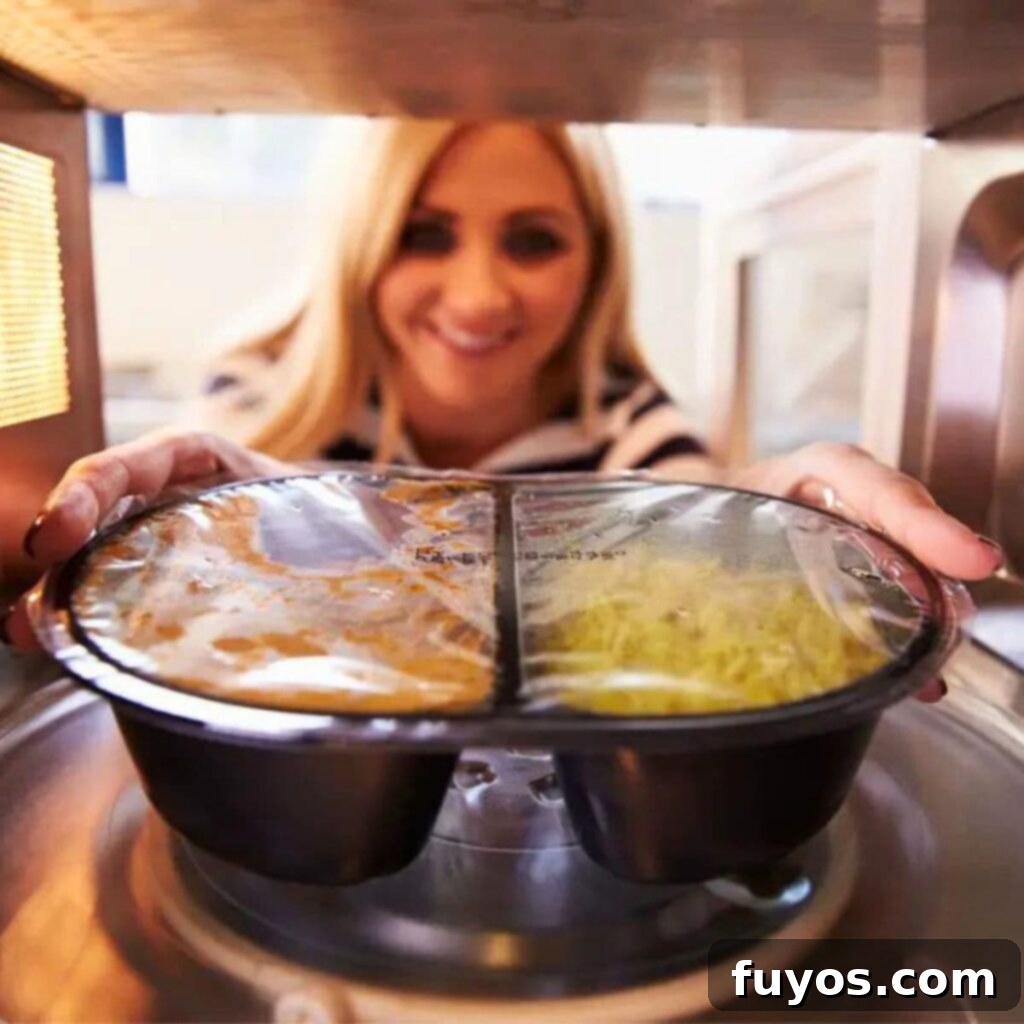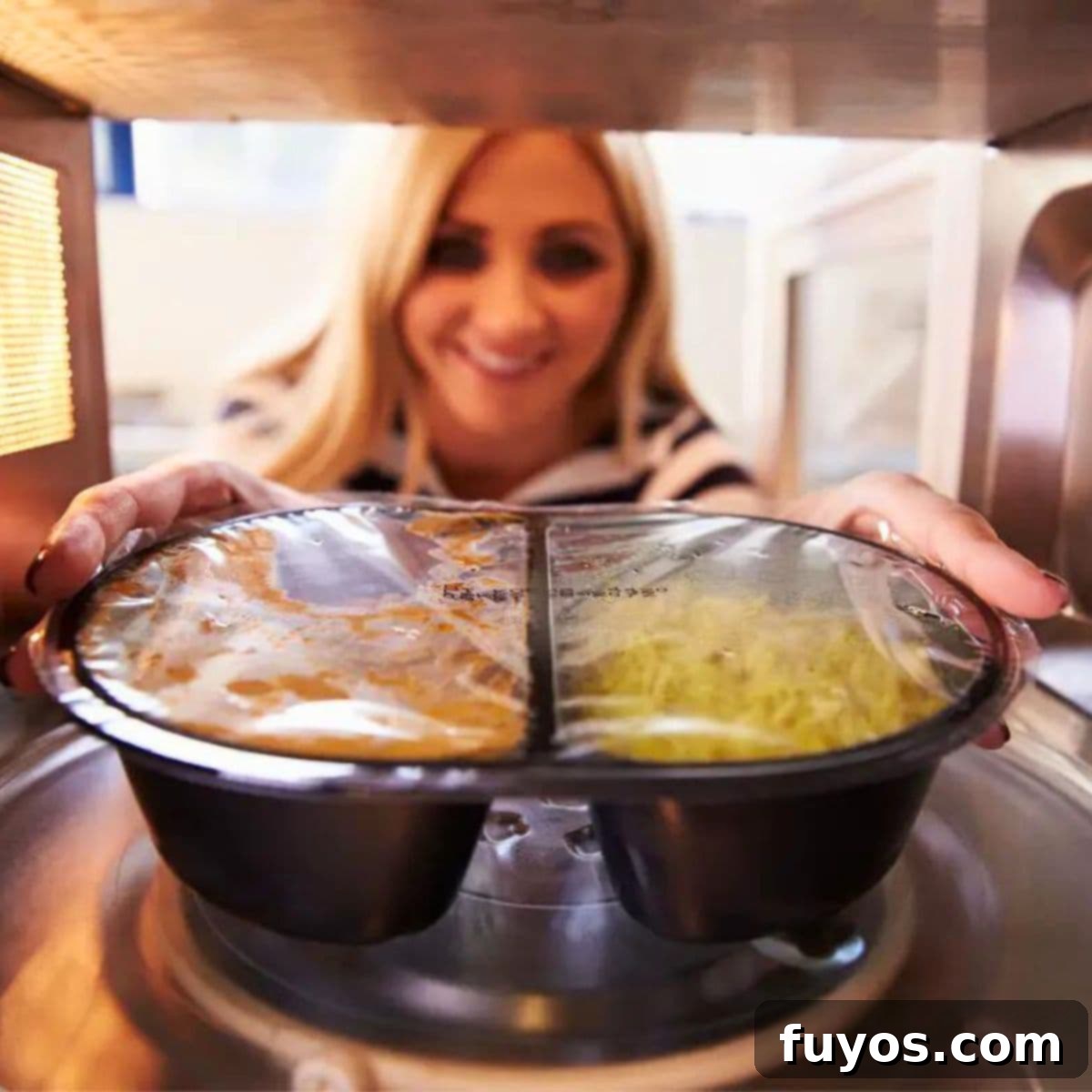What is a Sensor Cooking Microwave? Your Ultimate Guide to Smart & Effortless Heating
In today’s fast-paced world, kitchen appliances are constantly evolving to offer greater convenience and efficiency. If you’ve recently purchased a new microwave oven, or are considering an upgrade, you might have noticed a fascinating feature: the “sensor reheat” or “sensor cook” button. This innovative technology promises to take the guesswork out of microwave cooking, but what exactly does it mean? What is a sensor cooking microwave, and how does it revolutionize your daily meal prep?
This comprehensive guide will demystify sensor cooking, explaining its underlying technology, how it differs from conventional microwaves, and whether it’s the right choice for your kitchen. Personally, I find it incredibly convenient for perfectly warming up my lunch leftovers, and I’m confident you’ll discover its remarkable benefits too!

How Does a Sensor Cook Microwave Oven Work?
At its core, a sensor cook microwave works by utilizing advanced sensors to intelligently monitor the food as it’s being heated. Unlike traditional microwaves that rely on you to manually input time and power levels, a sensor microwave employs a humidity or steam sensor, often located inside the oven cavity. This sensor detects the amount of steam released from the food during the cooking process.
As food heats up, it naturally releases moisture in the form of steam. The sensor continuously measures this steam. Once a certain level of humidity is detected, indicating that the food is beginning to cook thoroughly or has reached a specific temperature, the microwave’s internal computer takes over. It then references a pre-programmed algorithm to effectively determine the optimal remaining heating level and adjust the cooking time and power accordingly. This dynamic adjustment ensures your food is cooked or reheated to the optimal safe temperature, eliminating the common problem of undercooked centers or overcooked edges.
This smart technology is designed to work with a wide variety of foods and quantities. Whether you’re gently warming a plate of leftovers, preparing a perfectly baked potato, or cooking frozen vegetables, a sensor cook microwave simplifies the process, consistently delivering excellent results and taking the guesswork out of microwave cooking.
However, it’s worth noting that even with sensor technology, some foods, particularly dense items like lasagna or casseroles, can still experience uneven heating. This often happens because the microwave heats until the overall moisture output reaches a certain level. If a dish has a cold center but hot edges, the sensor will continue cooking until the center is sufficiently heated, which can lead to the outer portions becoming excessively hot or dry. To mitigate this common issue, consider breaking larger items into smaller pieces, or pause the microwave periodically to stir your food. This helps distribute heat more evenly throughout the dish.
Additionally, ensuring your dish rotates is crucial, unless your microwave is equipped with a built-in turntable. The microwave turntable’s spin is fundamental for achieving even cooking, preventing hot spots and ensuring thorough heating across the entire dish, even with sensor technology.
Quick + Easy Recipes
straight to your inbox
Can You Cover Your Food While Using Sensor Cook in a Microwave?
Absolutely, you can and often should cover your food when using the sensor cook function in a microwave! Whether you use a microwave-safe lid, a sheet of microwave-safe plastic wrap, or even a damp paper towel, the sensor technology will still operate effectively. The key is how the sensor interacts with the steam.
When food is covered, the steam it releases during heating will first accumulate within the confined space under the cover. Once the covering becomes saturated with this steam, or the internal pressure builds, it will begin to release a consistent amount of humidity into the microwave cavity. The microwave’s sensor then detects this humidity release, accurately gauging the food’s progress and adjusting the cooking cycle to ensure optimal results. Covering food also helps to retain moisture, prevent splatters, and can even promote more even heating by trapping steam around the food.
What’s the Difference Between a Sensor Microwave and a Regular Microwave?
When comparing a sensor microwave to a regular, conventional microwave, the fundamental cooking mechanism remains the same: both use electromagnetic waves to heat food. However, the critical differentiating element lies in the inclusion of the intelligent sensor and its associated automation features in a sensor microwave. This sensor automates the cooking process, effectively setting the program for you, which a regular microwave cannot do.
A traditional microwave requires you to manually input the cooking time and power level. This often involves estimation, trial and error, and frequent pauses to check if the food is done. For instance, if you’re cooking a potato in a regular microwave, you might guess it needs 5 minutes, only to find it undercooked. You’d then add more time, check again, and repeat until it’s cooked through. This can be time-consuming and lead to inconsistent results.
In contrast, a sensor cooking microwave eliminates this guesswork. For that same potato, you would simply select the “baked potato” sensor setting, press start, and walk away. The microwave’s sensor would monitor the steam, determine when the potato is perfectly cooked, and then automatically turn off. This makes sensor microwaves incredibly convenient for a diverse range of users, from children learning to cook to busy individuals who need to multitask, ensuring consistent and perfectly heated meals with minimal effort.
Is Sensor Cooking the Same as Convection Cooking?
No, sensor cooking and convection cooking are fundamentally different functions and operate on entirely separate principles. It’s a common misconception, but understanding their distinctions is key to choosing the right appliance for your needs.
Sensor cooking is an automated feature found in many microwaves. As we’ve discussed, it utilizes a humidity sensor to detect steam released from food. Based on this moisture data, it adjusts the cooking time and power levels to achieve thorough and optimal heating without manual intervention. Its primary goal is precision and convenience in microwave-specific tasks like reheating, defrosting, and cooking certain items.
Convection cooking, on the other hand, is a different heating method altogether, typically found in convection ovens or combination microwave-convection ovens. Convection cooking works by circulating hot air throughout the oven cavity using a fan. This constant circulation of hot air decreases cooking time and promotes more even heat distribution, resulting in dishes that are browned, crispy, and cooked more uniformly, similar to a conventional oven. It excels at baking, roasting, and crisping foods.
To illustrate the difference: if you were to cook a piece of chicken with convection cooking, it would cook faster and achieve a crispier skin due to the circulating hot air. However, you would still need to manually set the temperature and cook time. With sensor cooking, while it might take longer for that chicken to fully heat through compared to convection (as it relies on internal steam release for doneness), you would only have to press a single button, and the microwave would manage the entire process for you.
Many modern appliances offer both sensor microwave and convection oven capabilities in one unit, providing the best of both worlds. But it’s important to remember they are distinct functions, each suited for different culinary tasks.
Is a Sensor Cooking Microwave Worth It?
The value of a sensor cooking microwave ultimately depends on your individual cooking habits, preferences, and how much you prioritize convenience. On average, a sensor-equipped microwave model typically costs between $50 and $100 more than a comparable model without the sensor functionality. This price difference can fluctuate based on the microwave’s brand, size, style (countertop, over-the-range, built-in), and additional features.
If you anticipate rarely, if ever, using the sensor cook function, then the additional investment may not be worthwhile for you. You would essentially be paying for a feature you don’t utilize. However, for many households, the benefits of sensor cooking significantly outweigh the modest price increase, especially when considering the time and effort saved.
Where a sensor microwave truly excels and proves its worth is in specific applications:
- Reheating Food (Leftovers): This is arguably its strongest suit. No more guessing how long to heat last night’s dinner, only to find it cold in the middle. The sensor ensures perfectly warmed leftovers every time.
- Cooking Vegetables: From fresh broccoli to frozen corn, sensor cooking can perfectly steam vegetables, retaining their nutrients and achieving ideal tenderness without overcooking.
- Heating Pre-made Frozen Meals: Many frozen dinners have vague heating instructions. Sensor cooking automatically adjusts, making sure your meal is thoroughly heated and ready to eat.
- Popcorn: Many sensor microwaves have a dedicated popcorn button that prevents burning by detecting when the kernels stop popping.
- Softening/Melting: Accurately softens butter or melts chocolate without scorching.
The primary advantage here is the significant time saving and reduction of mental effort. It allows you to focus on other tasks while your food cooks itself, reliably delivering consistent results.
Katie’s Tip
See how easy it is to reheat corn on the cob in the microwave for a delicious side dish!
Conversely, sensor cooking is generally not ideal for all types of food or tasks:
- Very Large or Unusually Shaped Foods: Items like a whole rotisserie chicken or exceptionally dense roasts may not cook evenly or thoroughly with sensor functions, as the sensor relies on surface steam.
- Beverages: Liquids don’t release steam in the same way solid foods do, making sensor cooking ineffective and potentially leading to superheating, which can be dangerous. Always heat beverages manually.
- Bread Products: Items like rolls, pastries, or bread can dry out quickly or become rubbery if overcooked, and the steam detection might not be precise enough for their delicate structure.
- Defrosting: While some microwaves have sensor defrost functions, traditional time-based defrosting or manual settings often offer more control, especially for delicate items.
- Small Quantities: Very small amounts of food may not produce enough steam to activate the sensor properly, leading to inconsistent results.
If your primary microwave usage revolves around these less compatible tasks, then the added cost of a sensor cook option is likely not a beneficial investment for you. However, for those who frequently reheat leftovers, cook vegetables, or prepare frozen meals, a sensor microwave can be a game-changer for daily kitchen convenience.
Conclusion
In summary, a sensor cooking microwave is an intelligent kitchen appliance that brings a new level of convenience and precision to microwave cooking. It contains an advanced humidity sensor that constantly monitors the steam emanating from your food, allowing the microwave to automatically adjust power levels and cooking times for optimal results, virtually eliminating the need for manual intervention. For an average additional investment of $50-$100 over a non-sensor unit, it offers a significant quality-of-life upgrade and considerable time savings for those who frequently use their microwave for reheating and cooking specific food types.
While sensor cooking isn’t universally ideal for every food item or every kitchen task, its benefits for everyday reheating, vegetable preparation, and frozen meal cooking are undeniable. Before making your next microwave purchase, consider your personal cooking habits and needs. If you, like me, appreciate the simplicity of perfectly reheated leftovers for lunch or effortless vegetable cooking, then a sensor microwave could be a fantastic addition to your home.
It’s also worth noting that sensor microwaves tend to fluctuate their power draw significantly throughout their cook cycle as they adjust. For optimal performance and to ensure your home’s electrical system is prepared, it’s wise to learn more about how many amps a microwave uses, especially if you’re installing a new unit or upgrading.
Katie’s Tip
Discover the simple method for reheating seafood boil in the microwave to enjoy a perfect meal!
